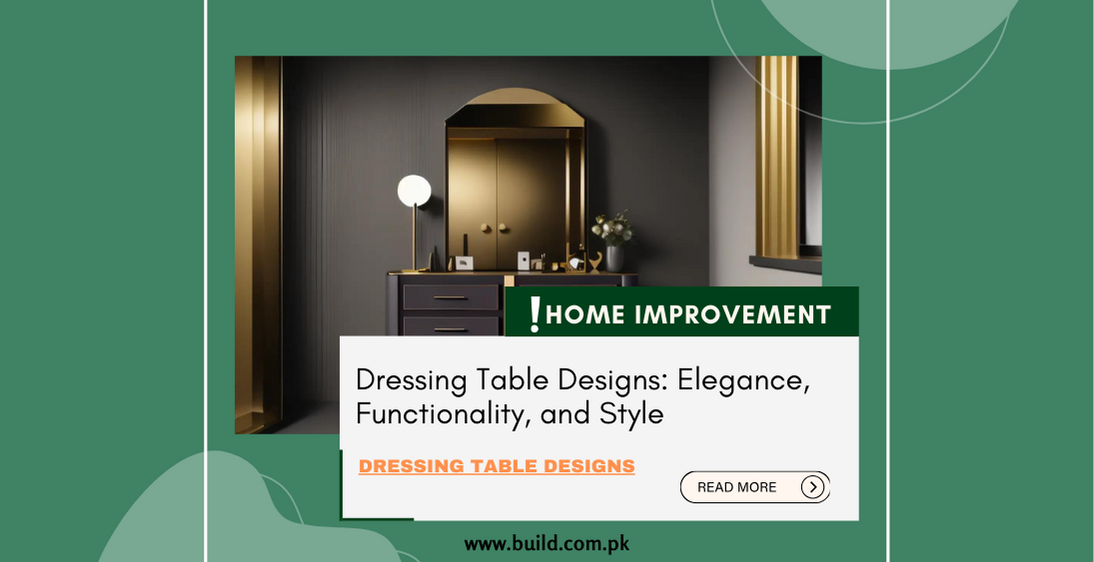Dressing Table Designs: Elegance, Functionality, and Style

Introduction:
Dressing tables, also known as vanities, stand as exquisite
furniture pieces, b lending practical functionality with aesthetic charm. These
versatile elements play an integral role in bedrooms, providing a dedicated
space for grooming, personal care, and reflecting individual style.
Evolution of Dressing Table Designs
Historical Influences:
The origins of dressing tables date back to ancient
civilizations, evolving from simple functional pieces to elaborate vanities
adorned with ornate details, often associated with royalty and luxury.
Art Nouveau to Modernism:
The Art Nouveau era brought intricate, nature-inspired
designs, while the Modernist movement introduced minimalist, sleek vanities,
emphasizing functionality over ornamentation.
Contemporary Innovations:
Today's dressing table designs embrace diverse styles,
combining traditional elegance with modern practicality. Customization options,
innovative materials, and space-saving features cater to varying tastes and
room sizes.

Understanding Dressing Table Designs
Elements and Features:
Dressing tables typically consist of a table or desk-like
surface, a mirror, and storage compartments like drawers or shelves. Some
designs incorporate additional features such as built-in lighting or foldable
mirrors.
Materials and Finishes:
Dressing tables are crafted from various materials like wood,
metal, glass, or a combination. Finishes range from classic polished wood to
contemporary lacquers, offering a diverse palette for personal preferences.
Styles and Themes:
Designs vary from vintage and ornate Rococo styles to sleek
and minimalist Scandinavian-inspired pieces. Themes such as Hollywood glamour,
rustic chic, or mid-century modern influence the overall aesthetic.
Types of Dressing Table Designs
Classic Vanity:
Description: A traditional design featuring ornate detailing,
curved legs, and intricate carvings. Often accompanied by a large mirror and
decorative elements.
Characteristics: Elegance, vintage charm, ornamental
features.
Modern Minimalist:
Description: Emphasizes clean lines, sleek surfaces, and
minimal embellishments . Focuses on functionality and simplicity.
Characteristics: Streamlined, simple shapes, understated
elegance.
Vintage Retro:
Description: Draws inspiration from past eras, such as the
1950s or '60s. Bold colors, geometric shapes, and playful designs characterize
this style.
Characteristics: Playful, vibrant colors, retro-inspired
shapes.
Scandinavian Chic:
Description: Influenced by Scandinavian design principles,
featuring light-colored wood, clean lines, and functional simplicity.
Characteristics: Minimalist, light tones, natural materials.
Contemporary Glamour:
Description: Blends modern design with luxurious elements
like mirrored surfaces, metallic accents, and plush seating.
Characteristics: Opulent, mirrored surfaces, lavish details.
Convertible or Multi-functional:
Description: Offers versatile functionality, such as tables
with foldable mirrors, hidden storage compartments, or convertible surfaces.
Characteristics: Space-saving, adaptable, practical.
Floating or Wall-Mounted:
Description: Designed to maximize space, these tables are
mounted on the wall, featuring a floating appearance. They often include
shelves or drawers.
Characteristics: Space-efficient, minimalist, floating
design.
Mirrored Dressing Table:
Description: Entirely or partially covered in mirrored
surfaces, providing a glamorous and reflective appearance.
Characteristics: Reflective, glamorous, visually spacious.
Advantages of Dressing Table Designs
Functional Organization:
Dressing tables offer dedicated storage for grooming
essentials, minimizing clutter and ensuring easy access to cosmetics, jewelry,
hair accessories, and skincare products.
Personalized Aesthetic Appeal:
These vanities serve as a reflection of personal style and
taste, allowing individuals to curate a space that resonates with their unique
preferences and room décor.
Multi-functionality:
Apart from grooming, dressing tables can double as a
workspace, study desk, or decorative accent, optimizing space utilization in
smaller rooms.
Conclusion:
Dressing table designs encapsulate a blend of historical
influences, contemporary innovation, and personalization, offering more than
just a functional space for grooming. They embody elegance, practicality, and
individuality, serving as a cherished furniture piece that enhances the bedroom
ambiance while catering to diverse grooming and styling needs. From intricate
vintage pieces to sleek modern vanities, the evolution of dressing table
designs continues to captivate with its fusion of form, function, and personal
style.









